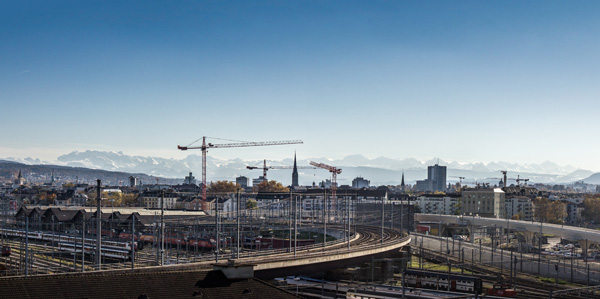
We’ve gone into depth in previous blog posts on various topics around retro-commissioning: from its many energy-saving benefits to the benefits of working with a NEBB-Certified company and the importance of performing commissioning and retro-commissioning services to ASHRAE 90.1–2013 standards. In case you missed any of those topics, let’s take a moment to give you a quick refresh on retro-commissioning.
What is retro-commissioning?
Simply put, retro-commissioning is the application of the commissioning process (testing a piece of equipment, facility, or plant to verify that it functions according to design objectives or specifications) for existing buildings. By retro-commissioning a building, the facility manager or decision-maker hopes to improve their building's operations and maintenance procedures to enhance overall building performance.
It is critical to hire a trained consultant to perform retro-commissioning services because they can be trusted to truly identify and resolve problems that occurred during the building’s initial design or construction, or address problems that may have developed throughout the building's life. But how exactly do professionals identify these problems or opportunities to improve facility operations? The Internet of Things and Smart Building technology, of course.
Read on as we dive into a few ways that IoT technology can help optimize retro-commissioning to its fullest potential.
IoT & Smart Building technology can identify problems more quickly & more accurately
The quicker and more accurate a system can identify problems with a building management system, the more time, money and hassle saved. According to Senseware, IoT can automate a building’s operations and communicate real-time datasets to facilities managers to identify issues affecting the building’s performance in an efficient manner.
Without the implementation of IoT technology, the following issues would be much more difficult and time-consuming to identify as soon as the problem arises—or potentially not even possible to identify in the first place.
- Equipment or lighting control
- HVAC issues
- Malfunctioning belts & valves
- Thermostat & sensor calibration issues
- Malfunctioning air balancing systems
- Amongst others
Even more important than the difficulty of identifying these issues without IoT, it would be extremely cost-ineffective. Having someone on-hand to monitor and evaluate systems 24/7 to ensure nothing malfunctions would end up costing more in the long run than it would with an IoT/smart building system in place to always keep track.
IoT & Smart Building technology can identify “hidden opportunities” during retro-commissioning projects
Not only is retro-commissioning useful for correcting problems within an older facility, but it’s also an opportunity to uncover new opportunities for more efficient systems, money savings and building operations. As stated by Senseware, the retro-commissioning process takes a holistic approach to building improvement, including all equipment and systems. Here are just a few examples of how IoT can identify areas for improved efficiency and money savings in your equipment:
- Lighting: IoT can provide data to communicate the most opportune times to schedule maintenance appointments such as re-lamping or cleaning. It can also quickly detect lighting malfunctions and immediately report this data to the person responsible to correct the issue.
- HVAC: IoT can quickly identify malfunctioning or poorly calibrated temperature sensors. During a retro-commissioning project, this data can be useful to make accurate corrections for improved energy savings and occupant comfort.
- Supplemental Loads: Typically identified as office equipment consuming energy when not in use, IoT can provide data of such equipment using unnecessary energy at inappropriate times. This information can be uncovered during the retro-commissioning process, allowing facility managers to communicate with employees to shut off equipment during non-working hours, etc.
IoT can be used for benchmarking in retro-commissioning projects
Benchmarking can be an extremely insightful practice when it comes to retro-commissioning and optimizing your facility. Essentially, benchmarking is the process of noting the energy performance and water usage of a building over a period of time and comparing it to other buildings in the same locale that are similar in size and use. Benchmarking can require complicated mathematical formulas if done from scratch but is simplified with the help of IoT technology.
IoT can make the benchmarking process much easier in several ways, including but not limited to:
- Data Collection: Data is a non-negotiable element to the benchmarking process. IoT technology and smart devices can provide space characteristic information, asset information, operating characteristics, energy project timelines, cost information and energy consumption data in real-time so the entire benchmarking process becomes more manageable.
- Data Verification: IoT technologies can be used to verify data to ensure accuracy, such as comparing of the data obtained with the building inventory, random sampling of utility meter data for spot checks and filtering out EUI values that are uncharacteristically high or low when compared with the national median EUI values.
- Data Analyzing: It’s not enough to just collect data and check it for accuracy—it must be analyzed to make proper changes and upgrades during the retro-commissioning process. IoT can analyze and interpret data by comparing baseline values of your facility against what has been obtained over time, and by conducting building performance modeling where actual building performance is compared with potential performance results. IoT can also conduct statistical reviews and compare individual buildings within a portfolio, according to Senseware.
Control Solutions can optimize your next retro-commissioning project!
Control Solutions provides commissioning and retro-commissioning services for our customers, such as engineering firms, general contractors, and mechanical and electrical contractors. Benefits of our commissioning and retro-commissioning services include improved system efficiency, a reduction in design changes and additional cost during the construction process, improved occupant comfort and a reduction in maintenance cost. Click here to learn more about our commissioning and retro-commissioning services, and click here to contact us with project details and needs.
Credits:
SensewareSenseware
Senseware
